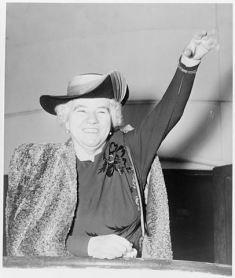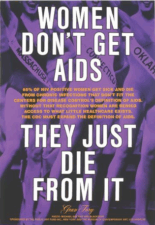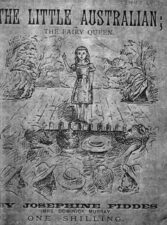Patricia Kulberg

Sister Elizabeth Kenny, New York 1950 (photo courtesy of New York World-Telegram and the Sun Newspaper)
She rose up out of the Australian outback before women got the vote and overturned the entire system of understanding and treating polio. Her innovations spared untold thousands the worst crippling effects of the disease. She was brilliant and brash, though her credentials were sketchy. She was physically imposing, a publicity hound who favored strings of pearls and huge, outlandish hats. She moved in a man’s world that deeply disappointed her and made as many enemies as friends. In a 1952 Gallup Poll she was named America’s most admired woman. But, in accounts of one of history’s most famous nurses? You’ll never find her.
Here was this larger-than-life figure, author of five books including an autobiography, subject of two biographies (Sister Kenny by Victor Cohn, 1975 and more recently Polio Wars by Naomi Rogers, which I reviewed in Women’s Review of Books, July-Aug, 2014), a Hollywood biopic (Sister Kenny starring Rosalind Russell, 1946), and countless articles in both lay and scientific journals of prior decades. Yet she’s hardly recognized within her own profession. (Read Polio Wars for an account of the efforts of the National Foundation for Infantile Paralysis to erase her contributions from history and her subsequent re-discovery by feminist scholars.)
Sister Kenny arrived on American soil with her new and radical theories of polio in 1940. By then, medicine, in alliance with big business, had left behind the era of blistering, bleeding, and purging, and grounded itself in scientific investigation, driving out the quacks and charlatans. It was the golden age of medicine, when doctors asserted and won their authority as technical experts and molded the profession into an exclusive hierarchy, at the bottom of which lay the patient—passive, obedient, and ignorant—and the nurse somewhere in between. Though Sister Kenny won some early converts, the medical profession treated her at best with skepticism and at worst with vicious, personal attacks. Her sharp tongue and poor command of scientific principles made her an easy target.
Medical orthodoxy taught that polio was a neurological disease that effectively severed the connection between nerves and muscles, causing a flabby paralysis. Eventually the diseased muscles atrophied and the victim was left twisted and paralyzed. Early splinting could prevent the deformities. Arms and legs were forcibly straightened and immobilized in plaster casts or steel splints for weeks to years, a treatment that withered the limbs.
Kenny did not see it that way. She perceived a hard, tender, and contracted muscle with its tendon stretched taut, a muscle in spasm. Kenny believed the principle cause of crippling was this painful spasm. Splinting only made things worse.
Kenny’s treatment consisted of prompt relief of spasm with moist hot packs, followed by intensive physical therapy, engaging the patient to work the muscles herself. Her practice was, as biographer Naomi Rogers points out, “optimistic, energetic and patient-centered” in contrast to what many observers saw as the therapeutic nihilism of the orthodox approach. The Kenny treatment often resulted in what appeared to be miraculous cures of the hopelessly paralyzed. During the massive post-war epidemics of polio descended, Americans were clamoring for her treatment. By the time the polio vaccine arrived on the scene in the 1950’s Sister Kenny’s treatment had become the standard of care.
Patricia Kullberg is an author of feminist historical fiction. Her recent novel, Girl in the River, (Bygone Era Books) tells the story of the World War II era call girl trade in Portland, Oregon. The story features two remarkable historical figures: the flamboyant Dr. Ruth Barnett, Portland’s most famous abortionist; and Dottie “Do-good” Lee, tireless anti-vice crusader and Portland’s first lady mayor.


